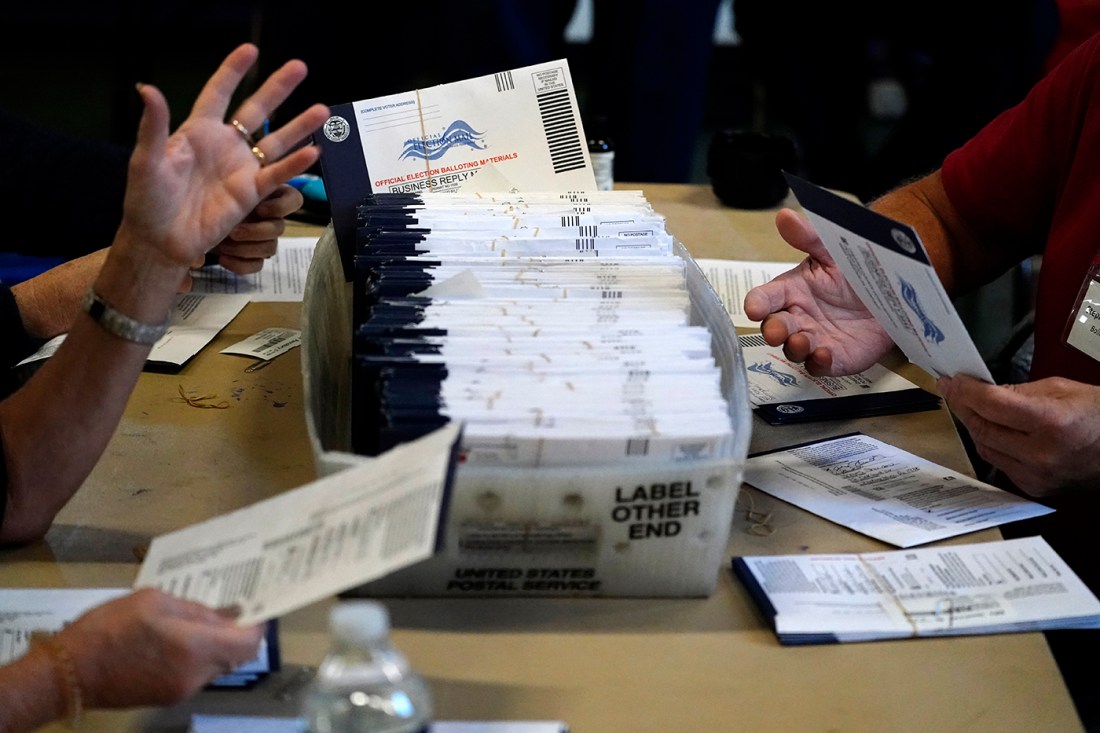Can a president eliminate mail-in voting by executive order?
President Donald Trump said he would “lead a movement” to get rid of mail-in ballots and sign an executive order to bring back “honesty” to the 2026 midterms.

President Donald Trump announced on social media that he intends to lead a movement to eliminate mail-in ballots. He also expressed opposition to the use of voting machines and said he would “sign an executive order to “bring HONESTY to the 2026 Midterm Elections.”
While presidents can advocate for election changes, experts note that the Constitution and U.S. law gives states the authority to decide how ballots are cast.
“He said he was going to lead a movement in order to accomplish this, and he can certainly do that,” said Northeastern University law professor Jeremy Paul. “But what he can’t do is just sign an executive order and eliminate mail-in ballots.”
In his post, Trump said that “the states are merely an agent” of the federal government and must follow presidential orders. According to Paul, election procedures such as mail-in voting are decided by individual states.
To eliminate mail-in ballots nationwide, Congress would have to pass legislation on the issue, something that seems unlikely, Paul said.
“That’s inconceivable he could get that,” he said. “There’s not sufficient support to have a nationwide elimination of mail-in ballots.”

States, however, could decide on an individual basis to eliminate mail-in ballots, Paul said, but the effects on elections would likely be negligible in many states.
Trump’s post also indicated that he plans to get rid of “voting machines,” which he said are more expensive than “accurate and sophisticated watermark paper,” which he claimed would be faster. His post did not specify what type of voting machines he would target.
Editor’s Picks
But Paul said Trump cannot eliminate the use of voting machines by executive order either.
“There is fear that they could be hacked, but there’s no evidence that they have been hacked,” Paul said. “There’s always a reason to be concerned about machines being tampered with, but we have, up until now, we have had many, many safeguards in place, and we have to make sure that we keep those safeguards in place.”
Concerns about voting technology have been part of national debates for years. Dominion Voting Systems, for example, recently settled a $67 million lawsuit against Newsmax after the outlet claimed the company’s machines led to fraud in the 2020 election.
Trump has previously argued that mail-in ballots led to his loss in 2020, though no evidence has supported claims of widespread fraud. Paul said that by 2024, Republican leaders had adjusted their strategy and the party did better with mail-in ballots.
“This has been an interesting dynamic over the last couple of elections, because in 2020, Trump went out of his way to question the validity of mail-in ballots,” Paul said. “As a result of that … Trump did really well in the Election Day vote, and the Democrats did really well in the mail-in ballots. This really hurt him. … Ever since then, he’s been saying that it was fraud, even though there’s no evidence that there was any fraud.”
Paul said recent comments indicate the president has revived concerns about voting methods, including after a meeting with Russian President Vladimir Putin.
“In 2024, Republicans did much better than they had previously with mail-in voting because the president’s attacks had stopped, but now they’ve started again,” Paul said. “Apparently, when he met with Putin … this just revived his concerns about this. But the bottom line is, he can’t, he cannot get rid of mail-in voting by executive order.”










